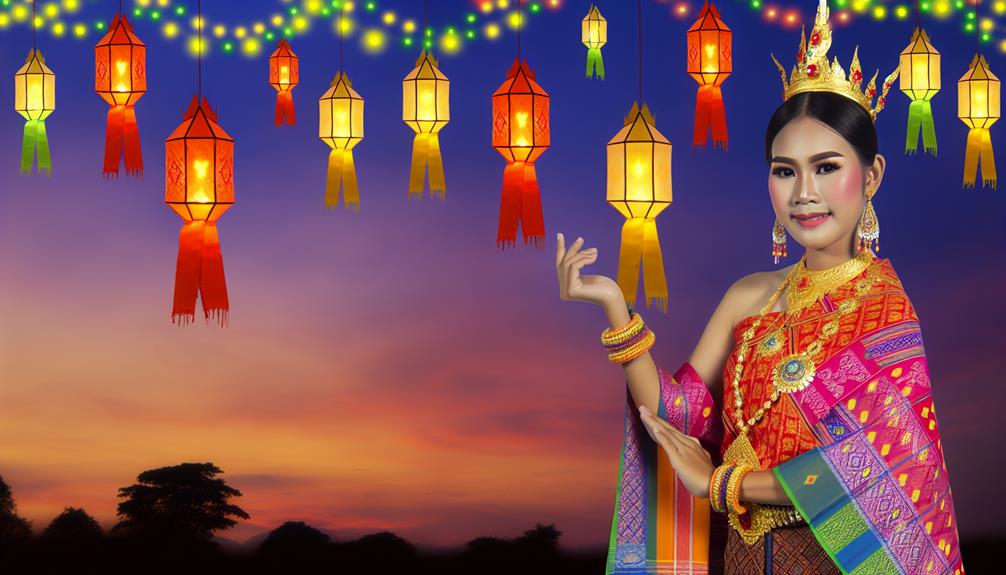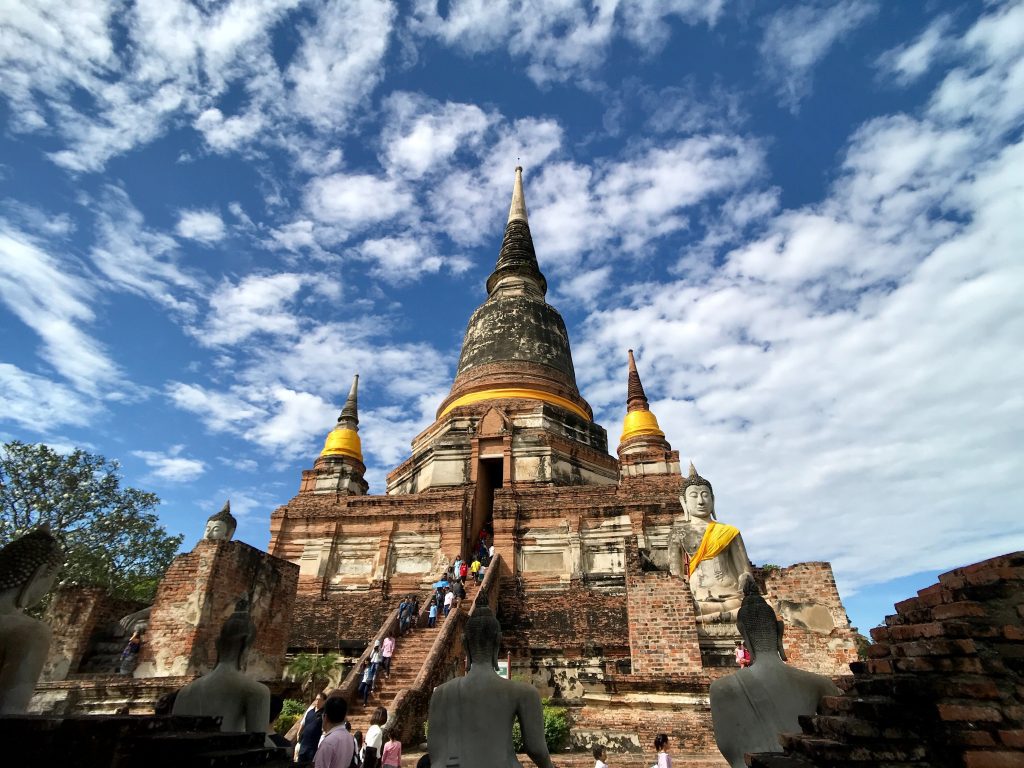You’d sooner find a snowflake in the heart of Bangkok than be cool and comfortable at a Thai festival without the right attire – traditional Thai clothing. As you navigate the vibrant street parades and the sacred temple ceremonies under the unrelenting Thai sun, you’ll want to blend cultural respect with personal comfort.
Choosing the perfect traditional Thai clothing outfit isn’t just about following tradition; it’s about understanding the delicate balance between etiquette and the practicalities of the tropical climate. You’ve got to select lightweight fabrics that breathe, accessories that speak to cultural nuances, and footwear that’ll carry you through the festivities without a blister in sight.
How To Pick Traditional Thai Clothing
While the guidelines of dressing for such occasions can be as intricate as the patterns on a Thai silk scarf, they’re not insurmountable. Stay with us as we explore the finesse of festive dressing that honors tradition and embraces the climate, ensuring you stand out for all the right reasons.
Understanding Thai Festive Attire
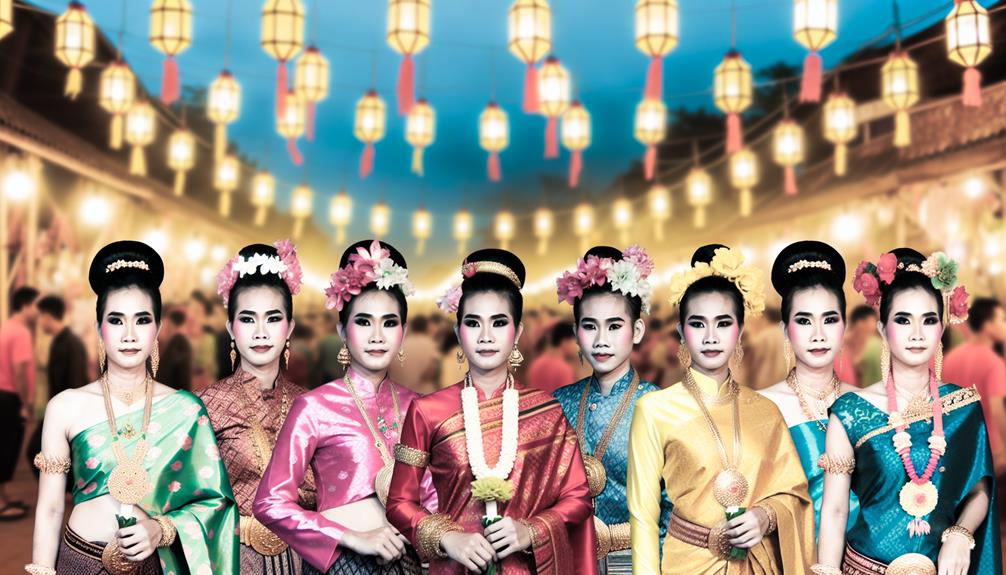
When attending Thai festivals, you’ll notice that traditional attire isn’t just traditional Thai clothing, but a vibrant expression of cultural heritage and respect for ceremonial customs. You’re immersing yourself in a world where every fabric pattern, color, and accessory carries a history that’s as rich as the festival you’re celebrating. It’s not merely about looking the part; it’s about honoring the past and embracing the present moment in Thai society.
You’ll see women in exquisite silk sarongs called ‘pha sin,’ paired with elegant blouses, while men might don traditional ‘chong kraben’ pants and a ‘sabai’ sash across the chest. Don’t be surprised if you’re encouraged to join in and wear these garments yourself. They’re a symbol of unity and participation, and wearing them correctly shows you’ve taken the time to understand and respect Thai customs.
Choosing Lightweight Fabrics
As you select your festive attire, opt for lightweight fabrics to stay comfortable in Thailand’s tropical climate. Cotton is a go-to choice; it’s breathable and absorbs sweat, helping you keep cool as you revel in the festivities.
Linen is another excellent option. It’s not only light but also dries quickly, which is perfect for the occasional splash from Songkran water battles.
If you’re eyeing traditional Thai garments, seek out those made from silk. Thai silk is renowned for its quality and airiness, making it ideal for hot and humid conditions. However, ensure it’s a blend suitable for the heat, as some silk can be heavy. Fabrics with loose weaves offer more airflow, so consider this when picking out patterns.
Don’t forget synthetics like rayon or viscose, which mimic natural fibers’ cooling properties but often come at a more affordable price. Steer clear of polyester or nylon, though; these trap heat and hinder ventilation, which is the last thing you want during a lively Thai festival.
Accessorizing Tastefully
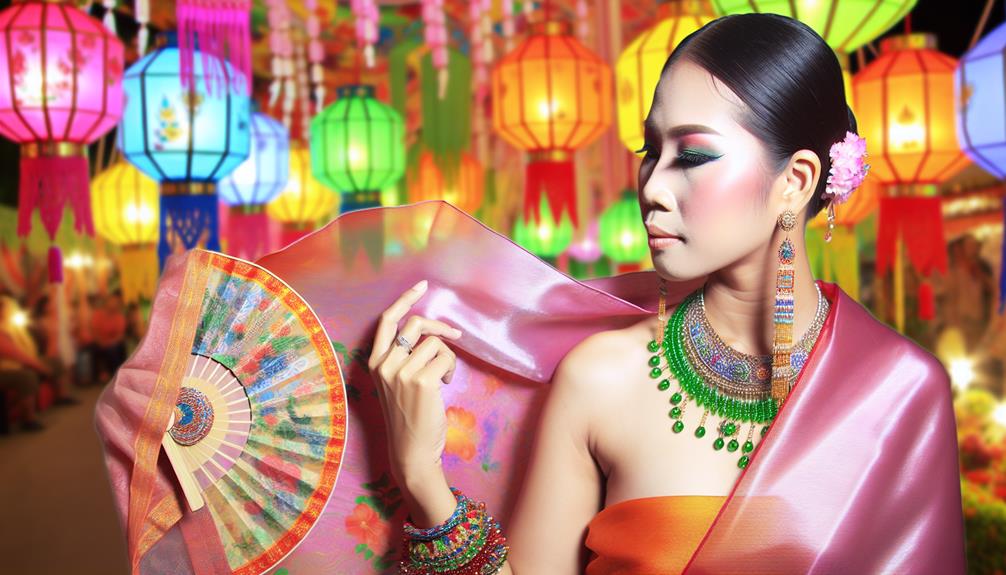
To elevate your festive look in traditional Thai clothing, choose accessories that complement your lightweight attire without overwhelming it. You’re aiming for a balance that enhances your outfit and pays homage to Thai culture. Think about incorporating traditional jewelry pieces such as silver bangles or necklaces with intricate designs. They’re not only beautiful but also steeped in history and craftsmanship.
You’ll want to opt for natural materials like wood, stone, or leather, which offer a rustic charm and keep in line with the cultural aesthetics. A handwoven bag or a silk scarf can add a pop of color and practicality. Remember, less is more; a statement piece can speak volumes compared to piling on multiple accessories.
For men, a simple leather wristband or a traditional sarong can serve as a subtle nod to the culture. Ensure you’re comfortable and your movement isn’t restricted by your choices; after all, you’ll likely be partaking in activities and ceremonies.
Lastly, consider the event’s location and time. Daytime festivities may call for a wide-brimmed hat to protect you from the sun, while evening events might allow for more ornate and shimmering pieces. Always dress respectfully and thoughtfully, keeping the occasion in mind.
Footwear for Comfort and Culture
Selecting the right footwear is crucial for fully enjoying the festivities while respecting Thai cultural traditions. You’re not just choosing shoes; you’re stepping into a world where comfort meets custom.
As you navigate through bustling streets and temple grounds, consider slip-on sandals or loafers. They’re not only practical for the often-required shoe removal at sacred sites, but they also embody the local style.
Opt for breathable materials like cotton or leather to keep your feet cool in the humid climate. Remember, the heat can swell your feet, so choose something with a bit of give. Avoid high heels and tight-fitting shoes; they’ll quickly become uncomfortable, and you’ll find them impractical on uneven surfaces.

Flip-flops might seem tempting, but they offer little support for hours of walking. Instead, look for sturdy, cushioned soles that provide comfort and protect your feet from the heat of the pavement. And, if you’re taking part in traditional dances or activities, flexible soles will allow you to move gracefully.
Respect the culture by keeping your footwear modest and in good condition. Tattered or overly casual shoes can be seen as disrespectful.
With the right footwear, you’ll honor tradition and ensure your feet are up for the joyous marathon of Thai festivities.
Etiquette and Dress Codes
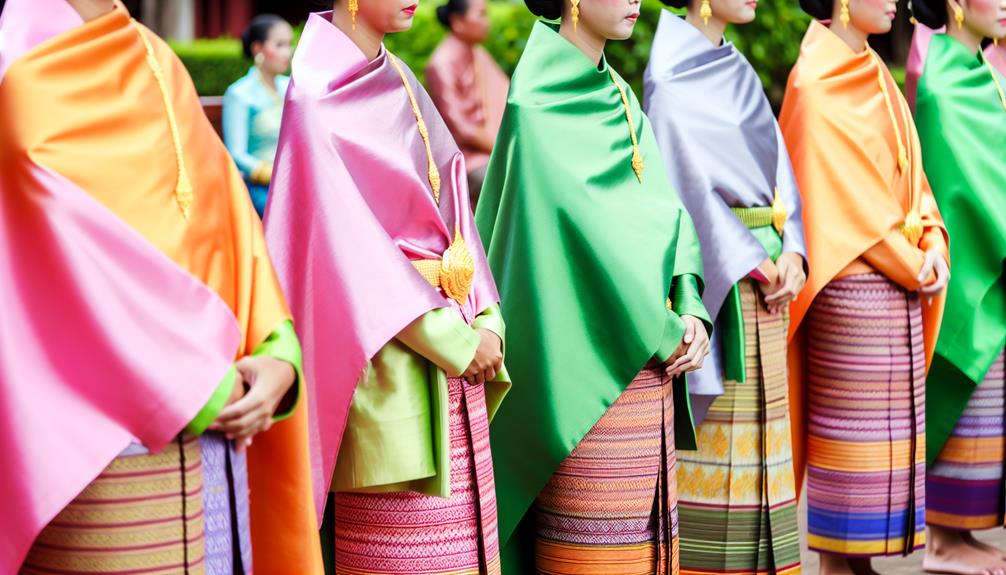
Having considered footwear that combines comfort with cultural respect, let’s now explore the etiquette and dress codes essential for participating in Thai festivities.
When you’re getting ready for a Thai event, remember that modesty is key. You’ll want to opt for traditional Thai clothing that covers your shoulders and knees, especially if you’re planning to visit temples or attend traditional ceremonies. It’s not just about looking the part; it’s about showing reverence for the culture and its practices.
For women, a traditional Thai silk blouse paired with a long skirt can be both elegant and respectful. Men might choose a lightweight shirt and long trousers. Keep in mind that bright colors are often favored, but it’s wise to avoid overly flashy or revealing outfits. You’re there to celebrate, not to distract.
Also, keep in mind that it’s customary to remove your shoes before entering someone’s home or a temple, so make sure you’ve got socks on or are comfortable going barefoot. And, if you’re given a garland or a wristband, accept it with a smile—it’s a sign of welcome and respect.
Dressing appropriately with traditional Thai clothing is more than just fitting in; it’s a gesture of your appreciation and willingness to embrace Thai traditions.
Frequently Asked Questions
How Do I Dress Appropriately for Thai Festivities if I Come From a Colder Climate and Am Not Used to the Heat?
To dress appropriately, you’ll want to wear lightweight, breathable fabrics like cotton or linen. Opt for loose-fitting clothes to stay cool and respect local customs by covering your shoulders and knees.
Are There Any Specific Colors or Patterns That Should Be Avoided During Thai Festivals to Prevent Cultural Insensitivity?
You should avoid black and dark colors during festive times, as they’re often worn during mourning in Thailand. Instead, opt for light, bright colors to show respect and blend in culturally.
Can Tourists Participate in Traditional Thai Festivities by Wearing Local Dress, and Where Can They Rent or Buy These Outfits?
Yes, you can join in Thai festivities wearing local attire. You’ll find rental shops near tourist areas or can buy outfits at local markets to fully immerse in the cultural experience.
How Should a Person With Disabilities Dress for Thai Festivals, Considering Both Comfort and Adherence to Cultural Norms?
You should choose comfortable, culturally respectful attire for Thai festivals. Look for accessible outfits that accommodate your needs while still honoring tradition. Plenty of shops offer adaptive versions of traditional clothing.
Are There Any Modern Twists to traditional Thai clothing That Are Acceptable for Younger Generations or for Those Looking for a More Contemporary Look?
Yes, you can incorporate modern twists like graphic prints on silk or cotton, pair traditional pieces with jeans, or accessorize with contemporary jewelry while still respecting Thai cultural norms.
Conclusion
As you dive into Thai festivities, remember to stay cool in lightweight, breathable fabrics. Accessorize with simplicity and respect for tradition.
Opt for comfortable footwear that honors cultural norms, and always be mindful of dress codes. Embrace the vibrant atmosphere while looking and feeling your best, blending seamlessly with the local customs.
Enjoy the celebration, dressed not just to impress, but to participate fully in the rich tapestry of Thai culture.

